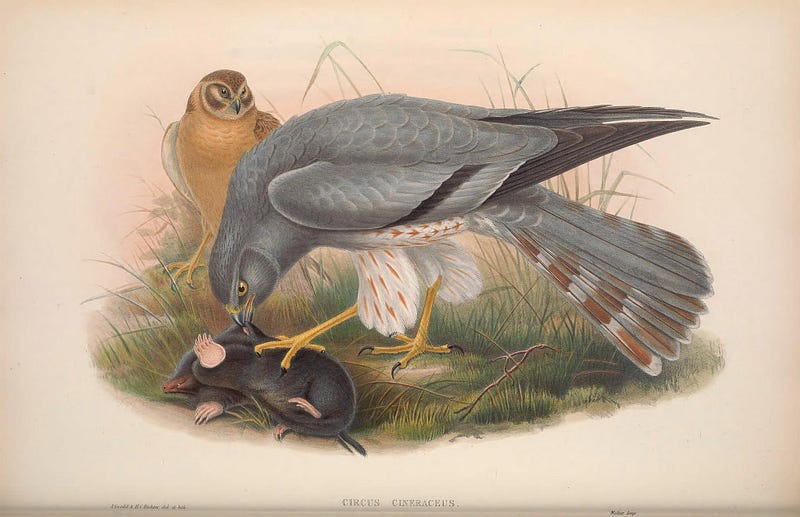The Truth Behind SourceWatch: Deceptive Practices Revealed
Written on
Chapter 1: The Role of SourceWatch in Science Discourse
Even those who claim to be "investigative journalists" can struggle to differentiate between reality and fabrication on platforms like SourceWatch. If they can be misled, what about the average person?
Attacks on researchers and medical professionals are not a recent phenomenon, particularly for those engaging in social media discussions about contentious topics such as climate change, vaccines, and GMOs. Many of these scientists fall under the banner of "Truth Warriors," a term used at a recent AAAS meeting, and they are committed to advocating for evidence-based policies. They believe in the importance of being well-informed and advocate for the incorporation of scientific findings in public policy decisions.
This paragraph will result in an indented block of text, typically used for quoting other text.
Section 1.1: Voices Beyond the Laboratory
The commitment to science-based policy isn't exclusive to scientists. Numerous individuals, including educators and parents from diverse backgrounds, engage in discussions about these critical topics. However, this involvement exposes them to the same backlash faced by scientists.
The goal of certain misguided individuals, conspiracy theorists, and zealots is to stifle scientific discourse. The scientists I know regularly receive unsettling correspondence, both online and offline. Some have been targeted at their workplaces, with misinformation being spread to undermine their credibility and safety. A recent case involved a teacher who received anonymous emails filled with outrageous claims, as highlighted in Stephan Neidenbach's piece on the threats posed by anti-vaxxers and other extremist groups.
Section 1.2: The Consequences of Misinformation
A recent personal attack against me, orchestrated by someone claiming to be an investigative journalist, mirrored many of these distressing patterns.
The similarities extend beyond the bizarre conspiracy theories about identity theft. The anonymous accuser of the teacher referenced SourceWatch as a basis for their misinformation. Paul Thacker, the so-called investigative journalist in question, has similarly relied on SourceWatch to propagate falsehoods about me. Despite my requests for corrections from editors, no action has been taken. He continues to disseminate his conspiracy theories to random individuals and public officials in my city, relying on the misleading claims from SourceWatch.
The credibility of SourceWatch is questionable, as they position themselves as "fair, accurate, and documented." However, my examination of several pages suggests otherwise, raising concerns about the extent of misinformation present on their platform. Upon inquiry, I discovered that SourceWatch lacks clear guidelines for compiling profiles on individuals, and there is no requirement for substantiating claims regarding affiliations with monitored entities. This opens the door for unfounded allegations. Research Director David Armiak stated, "Individuals need not be public figures to have profiles on SourceWatch," allowing anyone to create damaging narratives.
Chapter 2: The Lack of Accountability in SourceWatch
In the video "Why Permaculturists Need to Become 'Conspiracy Theorists'," James Corbett discusses the necessity for permaculturists to critically evaluate the information they encounter in the context of conspiracy theories. This call for scrutiny is particularly relevant in light of the misinformation that often circulates about scientific topics.
The second video titled "Polka Watame Koyori Laughed At Pekora Accidentally Showed Her Password" humorously illustrates how easily information can be misinterpreted or misrepresented, emphasizing the importance of verifying sources.
SourceWatch's approach allows for anonymous contributions without oversight, raising serious questions about their integrity. This lack of transparency means that editors' biases and agendas can infiltrate the content without accountability. Individuals with ulterior motives—be it anti-vaccine advocates, anti-GMO activists, or other interest groups—could exploit this system to undermine scientific discourse.
The Research Director's uncertainty about whether his colleague Paul Thacker edits SourceWatch highlights the site's lack of oversight. The implications of potential misconduct could be significant if exposed.
Ultimately, the absence of transparency at SourceWatch suggests that one should be cautious about trusting its content. Journalists and the public alike should be vigilant in evaluating their sources, and those who prioritize transparency should steer clear of SourceWatch.

Who is truly monitoring the activities of SourceWatch? The answer may not be as transparent as one might hope.